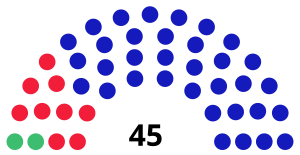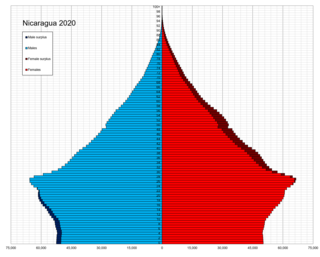
According to the 2022 revision of the World Population Prospects, Nicaragua has a population of 6,850,540. Whites and Mestizos and tribally unaffiliated Native Americans combined make up about 56% of the population. The remainder of the Nicaraguan population is 9% English-speaking Afro-Nicaraguans, and 33% Tribal Native American.

The politics of Spain takes place under the framework established by the Constitution of 1978. Spain is established as a social and democratic sovereign country wherein the national sovereignty is vested in the people, from which the powers of the state emanate.

In Spain, an autonomous community is the first sub-national level of political and administrative division, created in accordance with the Spanish Constitution of 1978, with the aim of guaranteeing limited autonomy of the nationalities and regions that make up Spain.

The Spanish Constitution is the supreme law of the Kingdom of Spain. It was enacted after its approval in a constitutional referendum; it represents the culmination of the Spanish transition to democracy. It is a written constitution.

Nicaragua is a unitary republic, divided for administrative purposes into fifteen departments and two autonomous regions.

The North Caribbean Coast Autonomous Region is one of two autonomous regions in Nicaragua. It was created along with the South Caribbean Coast Autonomous Region by the Autonomy Statute of 7 September 1987 through a division of the former Zelaya Department. It covers an area of 33,106 km2 and has a population of 541,189. It is the largest autonomous region or department in Nicaragua. The capital is Puerto Cabezas. It contains part of the region known as the Mosquito Coast.
Mískito Coast Creole or Nicaraguan Creole English is an English-based creole language spoken in coastal Nicaraguan region of Mosquito Coast on the Caribbean Sea; its approximately 40,000 speakers are spread over the RAAN and RAAS regions of Nicaragua. The region, known before 1986 as the Zelaya department, is today administratively separated into two autonomous regions: North Caribbean Coast (RAAN) and South Caribbean Coast (RAAS). Mosquito is the nickname that is given to the region and earlier residents by early Europeans who visited and settled in the area. The term "Miskito" is now more commonly used to refer to both the people and the language.

Spain is a diverse country integrated by contrasting entities with varying economic and social structures, languages, and historical, political and cultural traditions. The Spanish constitution responds ambiguously to the claims of historic nationalities while proclaiming a common and indivisible homeland of all Spaniards.

Both the perceived nationhood of Spain, and the perceived distinctions between different parts of its territory derive from historical, geographical, linguistic, economic, political, ethnic and social factors.

The Coast People's Party is a minor regional Nicaraguan political party founded in 1997. As part of the Coast Alliance the Coast Peoples' Party holds opposing views to the Constitutionalist Liberal Party, also known as PLC, Partido Liberal Constitucionalista which is a large party political party in Nicaragua.

The Bosawás Biosphere Reserve is a tropical rainforest in Nicaragua designated as a UNESCO biosphere reserve in 1997. At approximately 20,000 km² in size, the reserve comprises about 15% of the nation's total land area. It is the second largest rainforest in the Western Hemisphere, after the Amazon Rainforest in Brazil. Bosawás is largely unexplored, and is extremely rich in biodiversity.

The Rama are an indigenous people living on the eastern coast of Nicaragua. Since the start of European colonization, the Rama population has declined as a result of disease, conflict, and loss of territory. In recent years, however, the Rama population has increased to around 2,000 individuals. A majority of the population lives on the island of Rama Cay, which is located in the Bluefields Lagoon. Additional small Rama communities are dispersed on the mainland from Bluefields to Greytown. The Rama are one of three main indigenous groups on Nicaragua’s Caribbean coast.
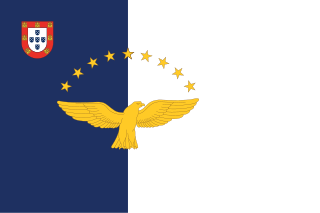
The political status of the Azores is defined by the Political-Administrative Statute of the Autonomous Region of the Azores, which acts as the standard legal constitutional framework for the autonomy of the Portuguese archipelago of the Azores. It defines the scope of the autonomous regional government and the structure and functioning of the region's organs of government within the framework of the 1976 Constitution of Portugal. The autonomous region of Madeira has a similar status.
An Organic Law in Spanish law under the present Spanish Constitution of 1978 must be passed by an absolute majority of the Congress of Deputies. The Spanish Constitution specifies that some areas of law should be regulated by this procedure, such as the Laws of Development of Fundamental Rights and Freedoms contained in the first section of Chapter Two of Title I of the Constitution, which was the basis for the Statutes of Autonomy of the various autonomous communities of Spain. Prior to the 1978 constitution this concept had no precedent in Spain. It was inspired by a similar concept in the current French Constitution of 1958, which established the French Fifth Republic.

Afro-Nicaraguans are Nicaraguans of Sub-Saharan African descent. Five main distinct ethnic groups exist: The Creoles who descend from Anglo-Caribbean countries and many of whom still speak Nicaragua English Creole, the Miskito Sambus descendants of Spanish slaves and indigenous Central Americans who still speak Miskito and/or Miskito Coast Creole, the Garifunas descendants of Zambos expelled from St. Vincent who speak Garifuna, the Rama Cay zambos a subset of the Miskito who speak Rama Cay Creole, and the descendants of those enslaved by the Spanish.
Settlement of English people along the Caribbean Coast, or Miskito Coast, of Nicaragua began in 1633. The area was controlled by Britain until 1860, and eventually integrated into Nicaragua by 1894. The Miskito Coast region divided into two autonomous regions within Nicaragua after 1987.

Myrna Kay Cunningham Kain is a Miskito feminist, indigenous rights activist and medical surgeon from Nicaragua. She has participated in political-social processes linked to the struggle for the rights of women and indigenous peoples in Latin America. She has been coordinator of the Indigenous Chair of the Intercultural Indigenous University.

The 2003 Rioja regional election was held on Sunday, 25 May 2003, to elect the 6th Parliament of the autonomous community of La Rioja. All 33 seats in the Parliament were up for election. The election was held simultaneously with regional elections in twelve other autonomous communities and local elections all throughout Spain.
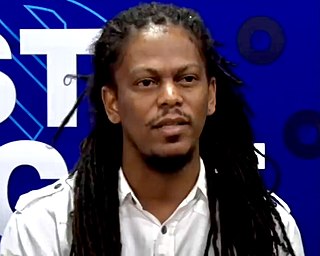
George Patrick Henriquez Cassayo is a Nicaraguan activist. Hailing from Nicaragua's Caribbean Coast, Henriquez is a former YATAMA party activist and served on its behalf as a member of the executive committee unified National Coalition opposition group in 2020. In 2021 he was a pre-candidate for president in the Nicaraguan general election with the Citizens for Liberty Alliance (ACxL).
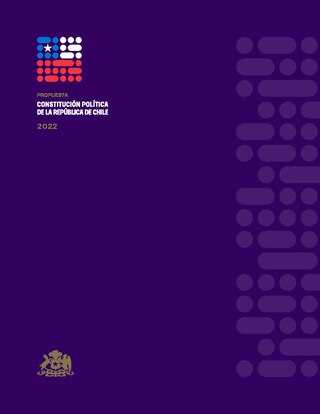
The proposed Political Constitution of the Republic of Chile was a Constitutional draft written by the Constitutional Convention of Chile between 4 July 2021 and 4 July 2022. An early draft was made available on 14 May 2022. The final proposal was made available on 4 July 2022.
